
This photo was taken yesterday from Doctor Derr‘s satellite office in Montauk, LI, New York, preparing next-day patients’ prescription readings. Use as needed when you see blitzes in your vision. Refills through November 2019.
Getting more out of learning
By Skip Clement
I’m not an exceptionally skilled fly tier. Anything following that as advice falls on deaf ears. Like a tying tip, it is most likely a politician’s promise. However, I have been at it for a long time, catching fish on flies I tie. Crappie to sails, grayling to brook trout, bonefish to pike, stockers to wild salmon (Atlantic and the Pacific versions), Iceland to New Zealand, Alaska to Argentina, Georgia to the Florida Keys.
The most important things about tying are always getting the proportions right, tying on a tube if it makes sense, and swimming a fly. If the fly is way out of whack proportionally, on too big a hook (hook tied unnecessarily), and perhaps most deadly, swimming the fly incorrectly—a good example—a slowly retrieved fly will not catch a roosterfish.
Intheriffle
James Spicer, Intheriffle is responsible for this little trick, shown in screenshot clips below, that can lead to production versions of tails that can be made up in advance and used to mimic immerging, adult, flying, crippled, spinners of everything from terrestrials to mayflies and the ever-popular midges, as well as anything that is better replicated with segments, like worms and leeches, saltwater or freshwater that float.
To make any “foam” fly sink or be swum sub-surface, add non-lead wire, add tungsten, or barbell eyes [non-lead]
Many of you more talented tyers already know the trick, but to me and perhaps a few others, it is a perfect storm for making segmented bodies and tails designed by the proxy of foam used to float. The fly that Spicer ties using the tie-in segmentation in the video is the Mohican Mayfly, and it is also linked below [scroll down to the end to watch].
Go figure?
Segments can be tied on any size or shaped hook or tube and made in a complete rainbow of colors. The segmented aspect of a fly adds measurably to the interest freshwater fish and saltwater game fish have in a fly and how it’s swum. Apparently, and like many great flies, it doesn’t have to look exactly like anything.
Please don’t leave the dock or truck without a box of them
Adding segments, including tails, to any fly has produced strikes and caught trouts and basses in freshwater on my home turf of North Georgia.
Probably the best part of fly tying is discovery. Finding a new way to do something more manageable, getting a hunch, tying segments to just about anything, and seeing it work.
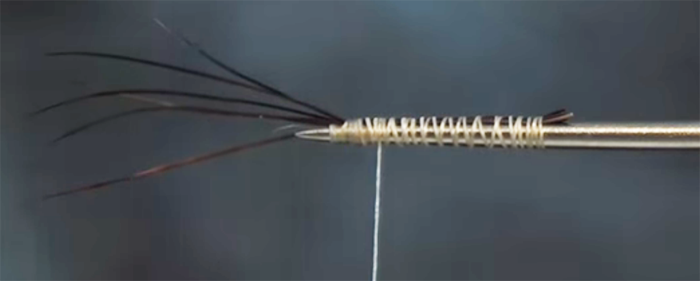
Step 1.
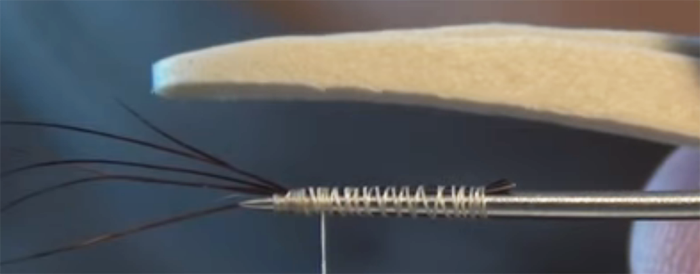
Foam trimmed to a point and folded in half before placed on needle.
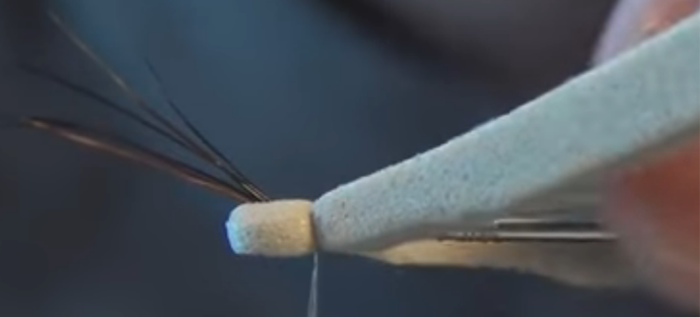
Tying in segments still onto a needle.
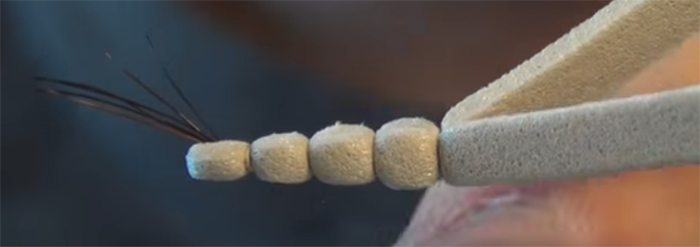
Segments completed on the needle and not yet transferred to the hook.
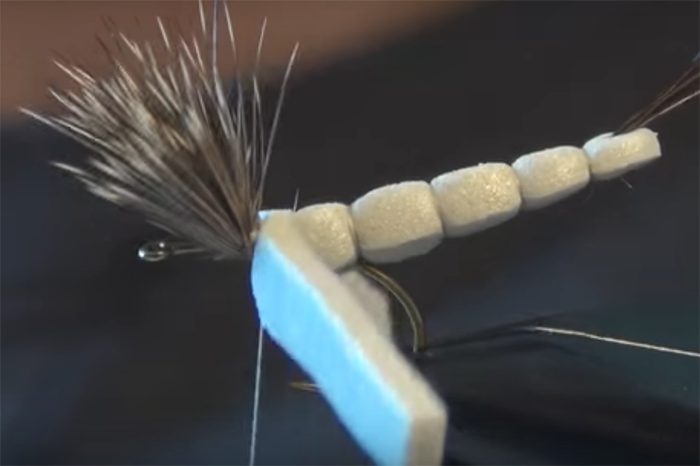
Tail segments in place on hook shank, but no head segment.

The portable segments in place on finished fly.






